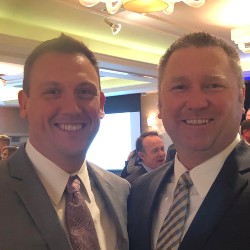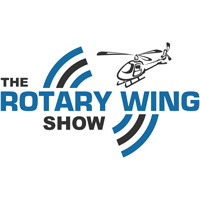Podcast: Play in new window | Download
Subscribe: RSS

Two US National Guard pilots are developing a new training tool to reduce the risk of and improve the fidelity of reduced visual environment training. IIMC, dust landings and white outs have all been the causes of both training mishaps and real world accidents and deaths. We talk about what it missing in the current training and how a new device and training method can replicate the sensations and challenges of degraded visual environments.
Tyson Phillips and Andre Lavallee make up the team at AT Systems a US company bringing a new training device to the market. Tyson and Andre are both instructor pilots with the US Army National Guard – Tyson in Oklahoma and Andre in Texas.
Between the two of them they have flown almost every rotary wing type in the US Army stable including stints in civil flying gigs.
The Challenge!
ICAO publishes a list of 35 aviation occurrence categories – so when there is an accident or an incident the investigators will tag it against one or more of those categories.
Categories are things like icing, aerodrome, turbulence, wind shear, security related, low altitude operations, bike strike, fuel and includes unintended flight into IMC.
That last one we more generally call inadvertent IMC – or inadvertent instrument met conditions. This is when visual conditions looking outside have degraded to the point that we have to use flight instruments to control the aircraft.
So crashing aircraft due to Inadvertent IMC is nothing new and happens frequently that it has its own ICAO occurrence category.
The easy association here is entering into cloud – and that’s fairly obvious. But by definition any time we are below VMC or visual met conditions we are technically in IMC. You have to be in one or the other.
If you are flying in rain or smog and the visibility drops below 5000m and you haven’t planned for it and you can’t use special VFR or helicopter VMC then you are now IMC, even if not actually in cloud.

The bigger machines out there can have some amazing instrument capability fitted to them. But in many cases if you find yourself going IIMC in a helicopter
- You are already likely to be Low level near hills and obstacles as you’ve probably been scud running to get to that point
- You are going to have a very basic instrument fitout
- The helicopter is most likely not going to have stability assist or any autopilot functions
- And in terms of pilot skill – how likely are you to be instrument qual’ed and if you are, how current are you?
So it is not going to be a nice spot to be.
Flying at night has its own challenges with the lack of visual cues.
But the other scenario that can put us in that really uncomfortable situation where we can’t see as much as we’d like to – is landings in dust or snow. As that rotor wash kicks up the loose surface and the cloud catches up as we drop through ETL – you can find yourself scrambling for any visual reference you can – just feet off the ground.
Today’s guests have come up with a training solution to help us get better at reacting to that transition into IIMC and that takes a lot of the risk out of practicing for degraded visual landings.
Podcast: Subscribe in iTunes | Play in new window | Download
Links from this week’s episode:
Support the podcast on Patreon
AT Systems website – company website for Tyson and Andre training equipment system
Be part of the conversation! What was your biggest takeaway from this episode?

